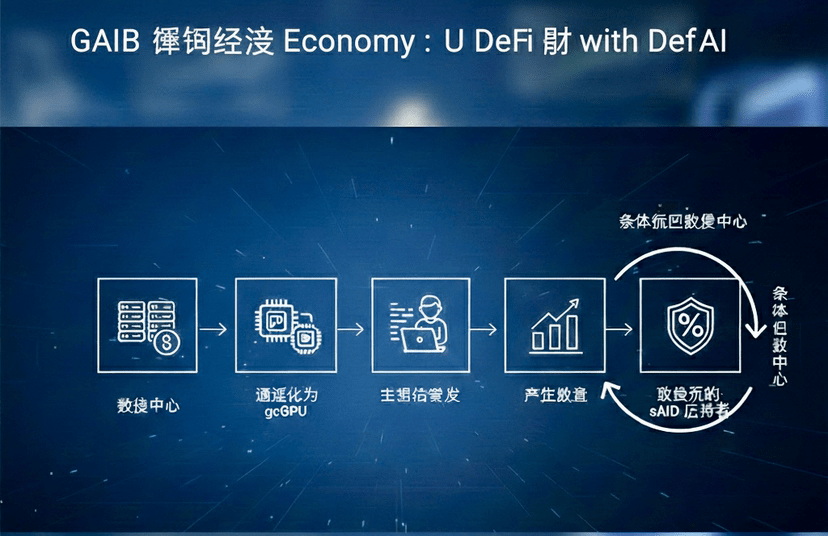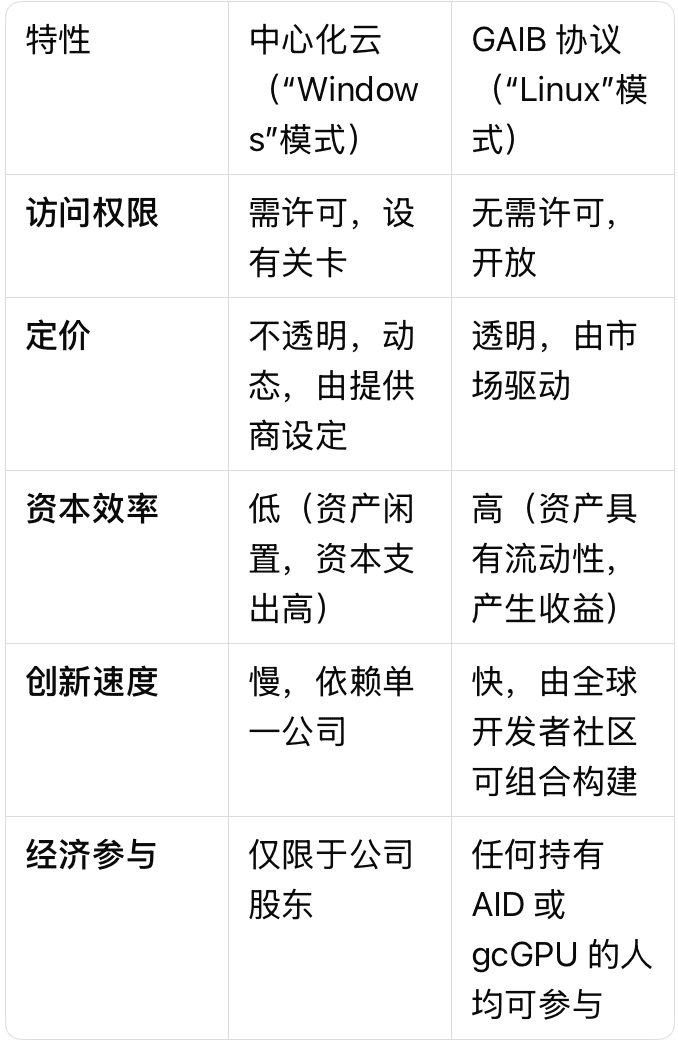An Engaging Story Begins: The Trapped Smart Architect
Dr. Aris Thorn stares at the obscure error messages on his screen, a cold sense of frustration knotting in his gut. His groundbreaking research on a protein folding algorithm for a rare disease has been stalled for three days. The problem lies not in his code or data but in the hardware. The dedicated GPU cluster he rented from a large cloud service provider has hit its prepaid limit, while his grant funding is trapped in a bureaucratic maze. To continue his research, he needs to purchase more compute credits at a high price, a cost he cannot bear immediately.
Aris is not just a scientist; he is a smart architect building models that could one day save lives. However, he is powerless, held hostage by the capital demands and opaque pricing of a centralized system. On the other side of the globe, Sarah Chen, in a small but growing data center, faces a parallel yet opposite problem. Her company has invested millions in top-tier GPU servers, but demand is highly volatile. Today, 40% of her cutting-edge hardware is idle, and these depreciating assets are silently consuming capital. The bridge connecting the urgent need for Aris's compute and Sarah's idle capacity spans a chasm formed by traditional financial systems, high fees, and fundamental trust deficits.
This is the human cost of the broken AI infrastructure economy: innovation is stifled by financial friction, and capital is wasted due to operational inefficiencies.
Global Context: $200 Billion Bottleneck
The story of Aris and Sarah is a microcosm of a global market failure. The AI revolution is built on computing power—especially graphics processing units (GPUs). These powerful chips are the engine of artificial intelligence, and access to them is the industry's biggest bottleneck.
Centralization Issues: A handful of cloud service providers dominate the market, creating a de facto oligopoly. This leads to cost inflation, lack of pricing transparency, and vendor lock-in. For developers and startups, it means that much of their capital is consumed in computing resources rather than innovation.
Capital Efficiency Issues: For hardware owners like data centers and cloud service providers, the GPU market is cyclical and highly volatile. Acquiring new hardware requires substantial upfront capital expenditure (CapEx), while underutilization leads to poor returns on these investments. Their most valuable assets are often financially illiquid.
Barriers to Entry: For average investors, the pathways to participate in the AI boom are limited to purchasing shares of a few public companies. There has long been a lack of a direct, seamless way to access the underlying engine of AI—the compute capabilities themselves. This AI infrastructure market, valued at over $200 billion, has remained a walled garden, open only to a few major players.
Essentially, we are facing a digital age 'gold rush' where the picks and shovels (GPUs) are controlled by a few large suppliers charging exorbitant rents, making it difficult for most prospectors to even enter the gold mine.
What is GAIB? The On-Chain Engine of the AI Economy
GAIB is a decentralized protocol that is bringing the AI infrastructure economy on-chain. Simply put, GAIB transforms physical GPU assets into liquid, income-generating digital assets, creating a unified and efficient global market for AI computing.
It can be viewed as the 'DeFi-ultimate' solution for AI infrastructure. Technically, GAIB is a blockchain-based protocol that tokenizes GPU compute time, creating a decentralized market where supply-side (hardware owners) and demand-side (AI developers, researchers) can connect directly without intermediaries. In simple terms, it is a financial and operational track that allows researchers like Aris to access compute power directly and efficiently at fair market prices from data centers like Sarah's, while also enabling anyone in the world to invest in the underlying assets that drive this entire economy.
Its uniqueness lies in its core fusion: the tangible, high-value world of AI computing meets the transparent, efficient, and programmable world of blockchain finance.
Core Pillar: The Architecture of the New Economy
The GAIB ecosystem is built on three synergistic foundational pillars.
Pillar One: GPU Tokenization Engine
This is the foundational layer. GAIB enables cloud service providers and data centers to tokenize their GPU compute. By locking their hardware into the protocol, they can mint representative tokens (e.g., gcGPU - GAIB Compute GPU) that symbolize ownership of unit computing power. This immediately transforms static, physical assets into liquid financial assets. These gcGPU tokens can then be rented to developers, used as collateral in DeFi protocols, or traded.
Use Case: A medical research institution can tokenize its internal GPU cluster's compute during off-peak hours, generating income from previously idle hardware, which can be reinvested into more research.
Pillar Two: AID Synthesized US Dollars and Pledged Economy
AID is the lifeblood of the GAIB ecosystem—a synthetic dollar native to AI. It is not just a stablecoin; it is an income-generating tool. AID is algorithmically soft-pegged to the dollar and backed by real earnings generated through GPU compute leasing on the platform. When users stake AID to become sAID (staked AID), they can earn a portion of these real earnings, which come from tangible economic activities rather than mere inflation.
Use Case: An investor is optimistic about AI growth but doesn't want to pick individual stocks. They purchase and stake AID, earning a passive income stream directly related to global usage rates and demand for AI computing power.
Pillar Three: DeFi Integration and a Composable Future
GAIB is not a closed garden. Its design is modular and interoperable. gcGPU tokens and AID are designed to integrate seamlessly with the broader DeFi space.
Lending: Data centers can use their gcGPU tokens as collateral to borrow AID or other assets for expansion without selling their hardware.
Structured Products: DeFi protocols can build novel financial products around gcGPU tokens, such as compute time futures or yield-optimized vaults.
Use Case: A video game company needs burst computing power for the launch of a new AI-driven game. They don't need to sign a long-term cloud contract; instead, they use a DeFi protocol to borrow a short-term AID loan to lease the exact amount of gcGPU tokens needed for a precise duration, then repay the loan, all done in a few clicks.

Strategic Differentiation: The 'Linux Moment' of AI Infrastructure
The current centralized cloud model is the 'Windows' approach to AI computing: a closed, proprietary system where providers control the rules, pricing, and access. GAIB represents the 'Linux' model: open-source, transparent, community-driven, and interoperable.

This transition is profound. It introduces levels of fairness, speed, and financial innovation that legacy systems cannot replicate. Innovation comes not only from GAIB's core team but also from the thousands of developers building on its open economic primitives.
User Experience: Problem, Solved
Let's return to our roles, Aris and Sarah, and see how GAIB is rewriting their story.
Sarah, Data Center Owner:
1. Sarah connects the GPUs of her data center to the GAIB protocol.
2. She tokenizes idle compute, minting gcGPU tokens that represent her hardware's computing power.
3. She lists these gcGPU tokens on GAIB's market for rental. Instantly, her idle assets begin generating income. Furthermore, she can use some of the gcGPU tokens as collateral in a lending protocol to borrow AID to fund the upgrade of her next server rack without diluting company equity.
Dr. Aris Thorn, Researcher:
1. Faced with a shortage of compute, Aris accesses GAIB's dApp. He doesn't need to create an account with a large cloud service provider; he just connects his crypto wallet.
2. He browses a transparent market, comparing compute prices from dozens of providers worldwide, including Sarah's data center.
3. He pays for AID using the crypto funds from his grant (or a flash loan) and leases the exact amount of gcGPU compute he needs for the next 48 hours.
4. His research continues with lower costs and greater flexibility, uninterrupted. The whole process takes minutes instead of days.
The gap has been bridged. Capital flows effectively to where it is most needed, accelerating innovation.
Economic Impact: Tokenizing the 'Picks and Shovels'
GAIB is pioneering the tokenization of the fundamental production factor of the 21st century—intelligence-based computing power. This is as significant as the securitization of real estate or the establishment of stock markets.
A New Asset Class: gcGPU tokens represent a new, non-correlated asset class backed by physical, income-generating assets. They are the digital equivalent of a real estate investment trust (REIT) for AI digital land.
Real Earnings from the Real Economy: The yields obtained from staking AID (sAID) are not inflationary; they come from the fees paid by developers like Aris for using real-world hardware. This creates a sustainable economic cycle that ties crypto-economic incentives to tangible, off-chain value creation.
Democratized Access: Just as anyone can now buy fractional shares of Amazon stock, anyone can own a piece of AI infrastructure prosperity by holding AID, gaining exposure to the foundational layer of the entire AI industry.
Risks and Challenges: Pioneering the Frontier
Any pioneering venture comes with challenges. GAIB sits at the intersection of two rapidly evolving and heavily scrutinized domains—AI and blockchain.
Regulatory Uncertainty: The classification of gcGPU tokens and AID will be a key discussion point with global regulators. GAIB focuses on being a utility-driven protocol supported by real-world assets and economic activity, giving it an edge over purely speculative assets.
Competition: Existing cloud service providers may develop their own tokenization solutions. However, their inherent centralization contradicts the core value propositions of decentralization. GAIB's first-mover advantage and community-driven open-source model are significant moats.
Security: As a financial protocol, it must be rock-solid. Rigorous methodologies for smart contract audits, bug bounty programs, and phased, secure feature releases are crucial for establishing the necessary trust.
GAIB addresses these challenges by prioritizing transparency, compliance design, and robust, community-reviewed code.
Opportunities for Investors and Builders: Why Now?
We are at a historical turning point, similar to the early days of the commercial internet. The AI revolution is undeniable, but its infrastructure is still under construction.
For builders and developers: GAIB's open protocol is a canvas for innovation. Developers can build new markets, management dashboards, financial tools, and AI-driven applications on top of its decentralized compute layer. The opportunity lies in becoming the 'Uniswap' or 'Aave' of AI computing.
For investors and stakers: This is an opportunity to gain foundational exposure to the growth engine of the AI economy. By staking AID, investors become limited partners in the world's first decentralized AI infrastructure fund, earning passive income from the work done across the network.
For hardware owners: This is a paradigm shift in business models. It opens up new revenue streams, enhances capital efficiency, and provides access to the global liquidity market for their services.
The urgency of 'Why Now' is clear: the AI boom is upon us, and traditional financial systems are too slow to effectively fund it. The market urgently needs a decentralized, capital-efficient solution.
Inspiring Conclusion: Building an Intelligent, Open Future
Imagine a world where outstanding researchers like Aris are no longer stalled by insufficient compute credits. Cutting-edge hardware is no longer idle due to market friction. The economic benefits of an AI revolution are not only distributed to corporate shareholders but also shared with the global community of stakeholders supporting its infrastructure.
This is the future that GAIB is building. It is not just a protocol; it is a movement that aligns economic incentives with human progress. The internet democratized information. Blockchain is democratizing trust and finance. Now, GAIB is taking the logical next step: democratizing intelligence itself.
By connecting the worlds of AI and blockchain, GAIB is not just creating a new financial instrument; it is laying the groundwork for a more efficient, more creative, and fairer technological future. This is a future where the tools of discovery are open to all, a future where an intelligent economy opens its doors wide. The rendering is complete. A new economic system is live.

